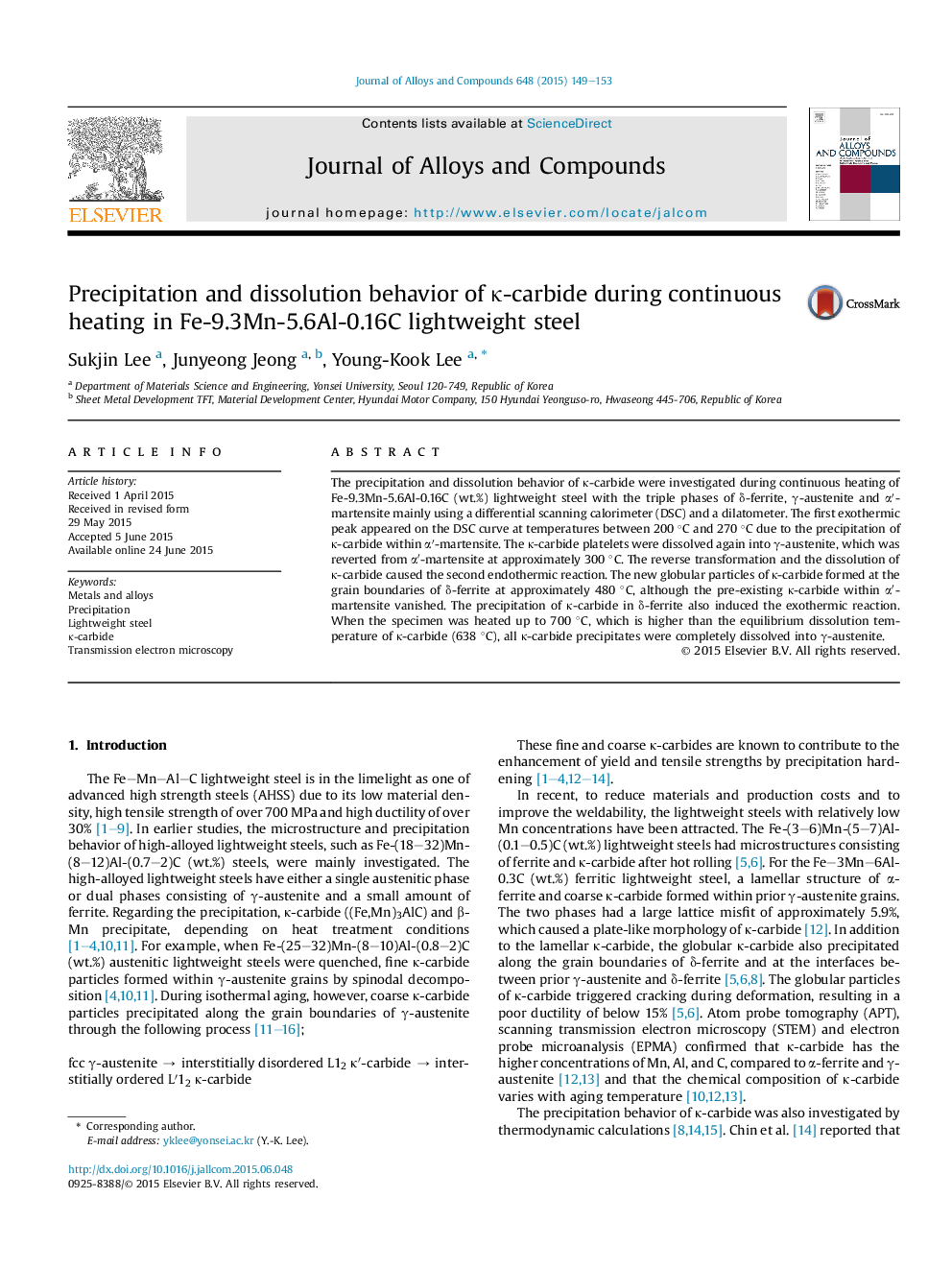| Article ID | Journal | Published Year | Pages | File Type |
|---|---|---|---|---|
| 1608461 | Journal of Alloys and Compounds | 2015 | 5 Pages |
•DSC curve of a lightweight steel revealed two exothermic and one endothermic peaks.•κ-carbide formed within α′ and at grain boundaries of δ, inducing exothermic peaks.•The reverse transition of α′ to γ occurred at 300 °C, causing an endothermic peak.•κ-carbide was dissolved into γ to disappear in the specimen heated up to 700 °C.
The precipitation and dissolution behavior of κ-carbide were investigated during continuous heating of Fe-9.3Mn-5.6Al-0.16C (wt.%) lightweight steel with the triple phases of δ-ferrite, γ-austenite and α′-martensite mainly using a differential scanning calorimeter (DSC) and a dilatometer. The first exothermic peak appeared on the DSC curve at temperatures between 200 °C and 270 °C due to the precipitation of κ-carbide within α′-martensite. The κ-carbide platelets were dissolved again into γ-austenite, which was reverted from α′-martensite at approximately 300 °C. The reverse transformation and the dissolution of κ-carbide caused the second endothermic reaction. The new globular particles of κ-carbide formed at the grain boundaries of δ-ferrite at approximately 480 °C, although the pre-existing κ-carbide within α′-martensite vanished. The precipitation of κ-carbide in δ-ferrite also induced the exothermic reaction. When the specimen was heated up to 700 °C, which is higher than the equilibrium dissolution temperature of κ-carbide (638 °C), all κ-carbide precipitates were completely dissolved into γ-austenite.
Graphical abstractFigure optionsDownload full-size imageDownload as PowerPoint slide
